Many people do not know that Google Docs allows you to enter Math equations in text documents. This can be especially handy if you need to enter text as well, and tools like Sheets are not suitable for the job. Typing in equations is quite easy in Google Docs and here is how you can do so.
- Open a new or existing Google Docs document and click on the 'Insert' menu at the top.

- Then click on 'Equation' in the dropdown menu that appears.
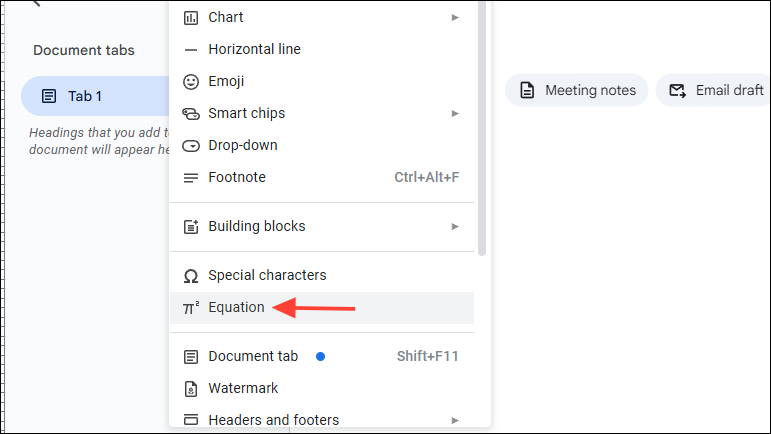
- A new toolbar will appear below the existing one. This lets you enter Greek letters, standard mathematical symbols, relational symbols, vector notations, arrows, etc.

- Click on any of the equations in the toolbar to expand it and then you can select any symbol from the dropdown menu to insert it in the document.
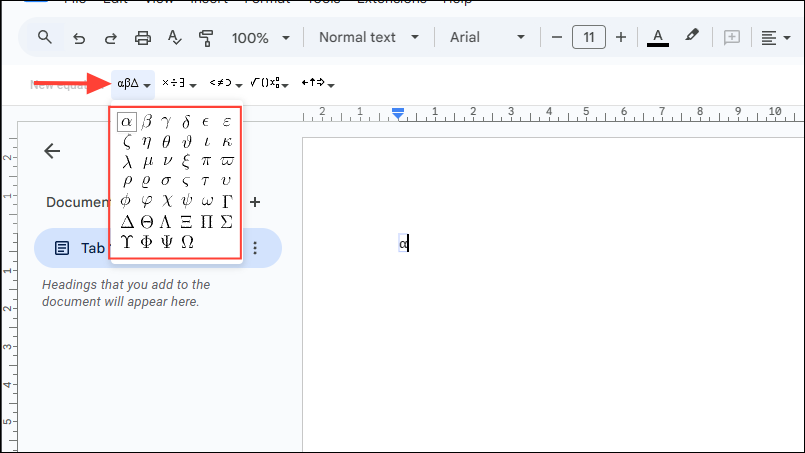
- For instance, you can insert the
pisymbol from the toolbar when calculating the volume of a cylinder.
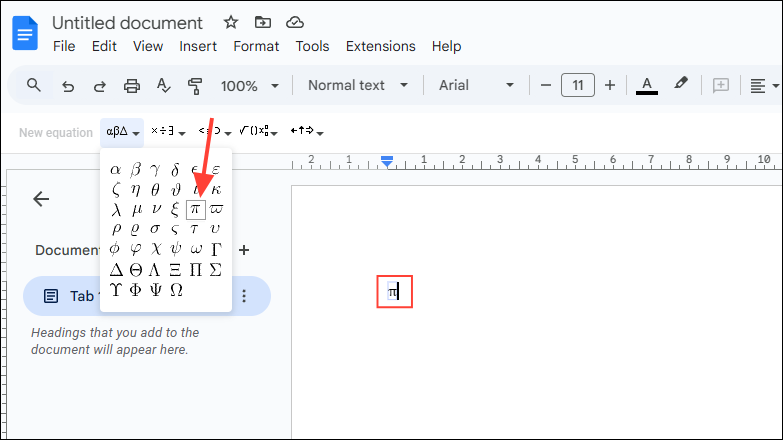
- To insert mathematical operations, click on the fourth dropdown menu and then select the operation you want to use.
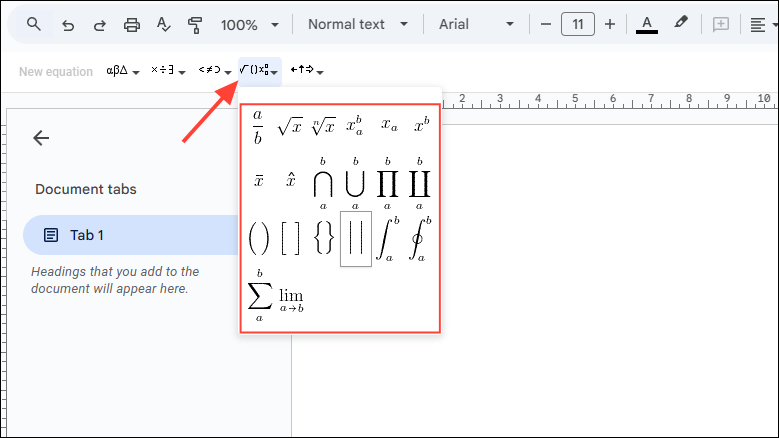
- You can click and type characters as you normally would even when you add mathematical operations.

- Once you've typed in your equation, press Enter to close down the Equation editor. You can always add another equation by clicking on the 'New equation' option that appears on the left when the Equation editor is closed.
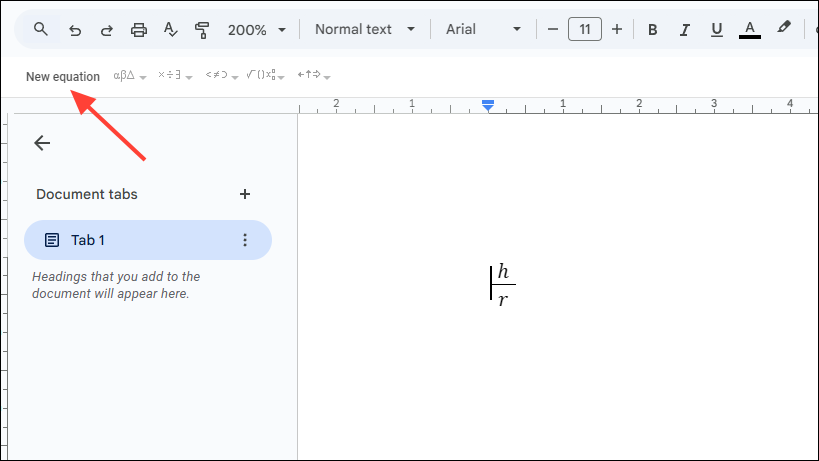
- To hide the Equation toolbar completely, click on the 'View' menu at the top and then uncheck the 'Show equation toolbar' option.
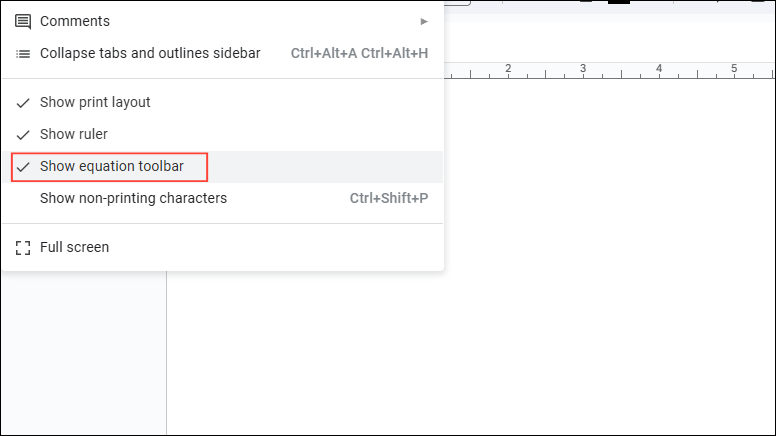
- To save time when entering equations, you can use shortcuts. To do so, type backslash
\and then type in the code for a particular function or symbol in the equation. For instance, to insert the pi symbol type\pi.
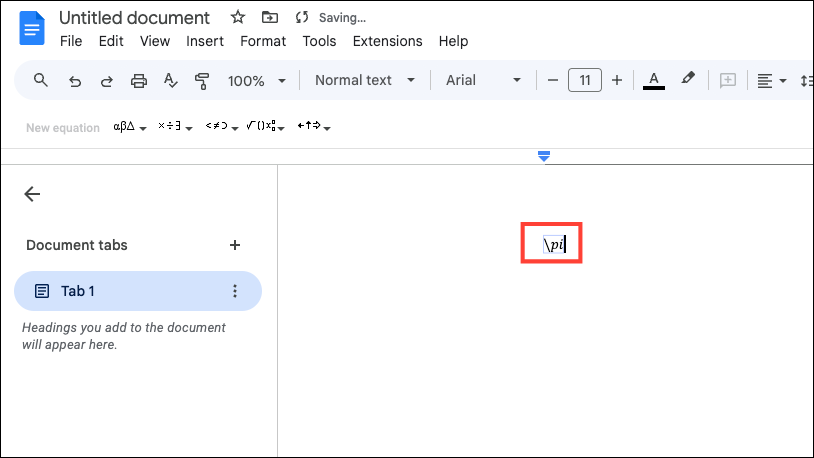
Note: Shortcuts work not only for the Greek symbols but for others as well and you can even add a superscript and subscript. For a superscript, use the
^ (circumflex) symbol or use the _ (underscore) symbol for a subscript. For example, typing b^2 in an equation would give you b squared.Things to know
- While Google Docs does not provide a complete list of the shortcuts you can use, you can find it online easily; this site has a great list for example.
- You can adjust the size and position of your equation by selecting it. This will show you several options that you can use to modify how the equation appears.
- You can also format the equation by clicking on it and then using the options on the Equation toolbar.
- The Equation Editor does not support LaTex commands directly so using the symbols provided is the only way to use them.


